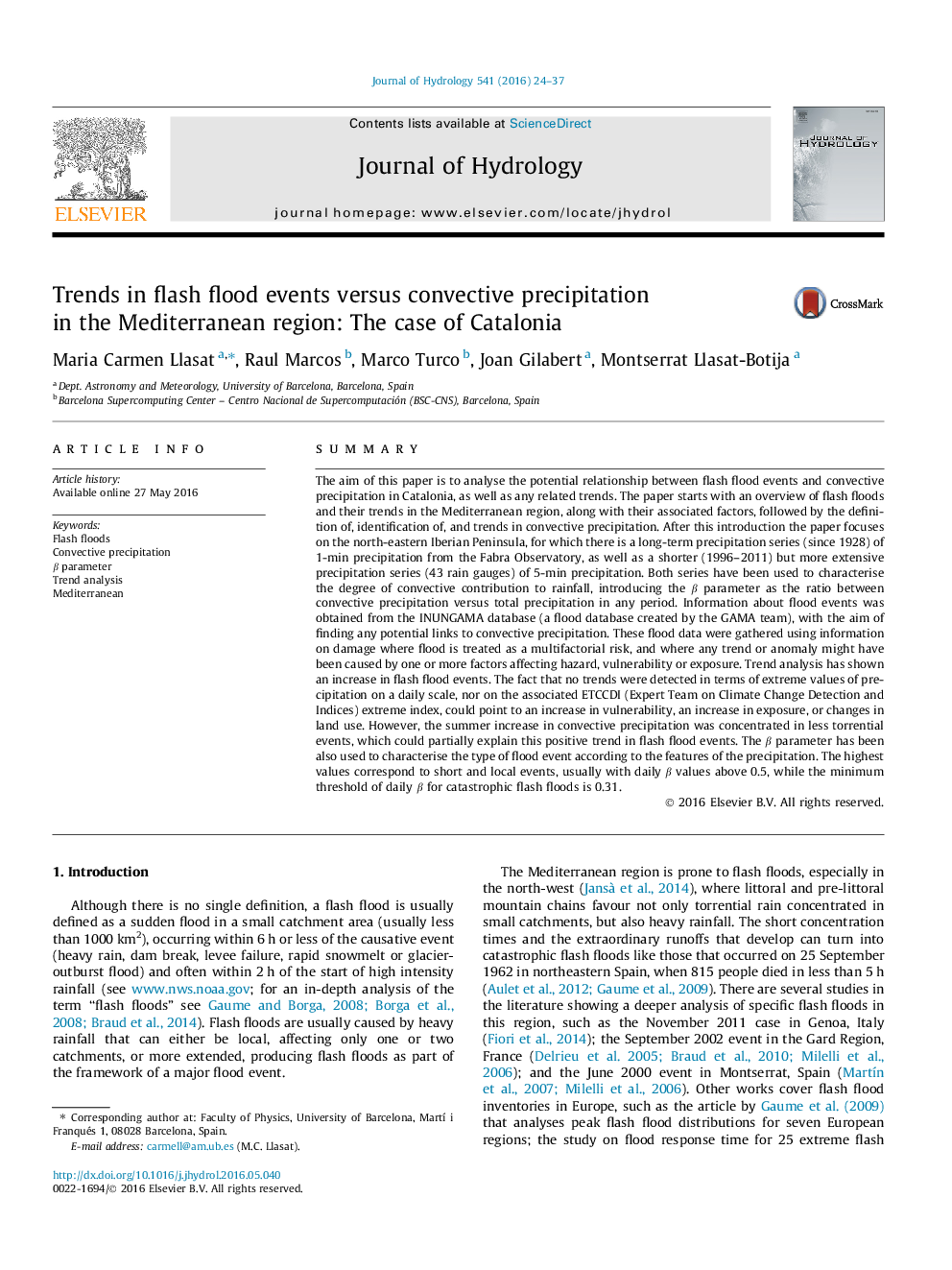| کد مقاله | کد نشریه | سال انتشار | مقاله انگلیسی | نسخه تمام متن |
|---|---|---|---|---|
| 6409335 | 1332869 | 2016 | 14 صفحه PDF | دانلود رایگان |
- The β parameter estimates the contribution of convective precipitation to total precipitation.
- The β parameter is useful to characterize convective events that can cause flash floods.
- Until now, no trends in extreme daily precipitation had been observed in the northeast of Spain.
- An observed positive trend in flash floods could be partially related to the β increase.
- More concentrated and intense convective precipitation events have been observed in Catalonia.
SummaryThe aim of this paper is to analyse the potential relationship between flash flood events and convective precipitation in Catalonia, as well as any related trends. The paper starts with an overview of flash floods and their trends in the Mediterranean region, along with their associated factors, followed by the definition of, identification of, and trends in convective precipitation. After this introduction the paper focuses on the north-eastern Iberian Peninsula, for which there is a long-term precipitation series (since 1928) of 1-min precipitation from the Fabra Observatory, as well as a shorter (1996-2011) but more extensive precipitation series (43 rain gauges) of 5-min precipitation. Both series have been used to characterise the degree of convective contribution to rainfall, introducing the β parameter as the ratio between convective precipitation versus total precipitation in any period. Information about flood events was obtained from the INUNGAMA database (a flood database created by the GAMA team), with the aim of finding any potential links to convective precipitation. These flood data were gathered using information on damage where flood is treated as a multifactorial risk, and where any trend or anomaly might have been caused by one or more factors affecting hazard, vulnerability or exposure. Trend analysis has shown an increase in flash flood events. The fact that no trends were detected in terms of extreme values of precipitation on a daily scale, nor on the associated ETCCDI (Expert Team on Climate Change Detection and Indices) extreme index, could point to an increase in vulnerability, an increase in exposure, or changes in land use. However, the summer increase in convective precipitation was concentrated in less torrential events, which could partially explain this positive trend in flash flood events. The β parameter has been also used to characterise the type of flood event according to the features of the precipitation. The highest values correspond to short and local events, usually with daily β values above 0.5, while the minimum threshold of daily β for catastrophic flash floods is 0.31.
Journal: Journal of Hydrology - Volume 541, Part A, October 2016, Pages 24-37
